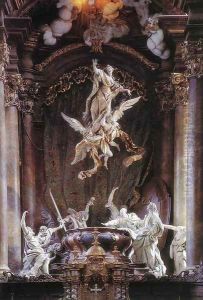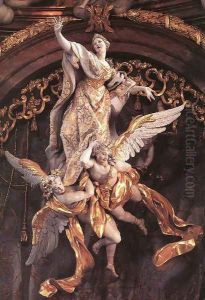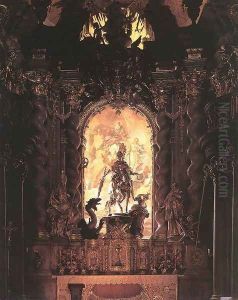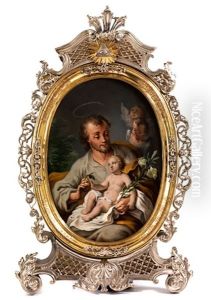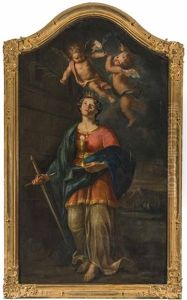Egid Quirin Asam Paintings
Egid Quirin Asam was a German sculptor and plasterer of the late Baroque period, born on September 1, 1692, in Tegernsee, Bavaria. He was part of the prolific Asam family, which had a significant impact on Baroque art and architecture in Southern Germany. Egid Quirin was the younger brother of Cosmas Damian Asam, with whom he frequently collaborated, creating some of the most remarkable examples of the Southern German Baroque style.
Egid Quirin Asam received his early training from his father, who was also a painter and sculptor. He further honed his skills in Rome, where he was deeply influenced by the works of Bernini and other Baroque masters. After his time in Italy, Asam returned to Germany, where he and his brother embarked on numerous joint projects. They often combined architecture, painting, and sculpture in a unified conception that exemplifies the Gesamtkunstwerk ('total work of art') ideal of the Baroque era.
Asam's talents lay in his ability to infuse his sculptures with a dynamic sense of movement and emotion, creating works that appear to come alive before the viewer's eyes. One of Egid Quirin Asam's most famous works is the Asam Church (Asamkirche, formally known as St. Johann Nepomuk) in Munich, which he and his brother designed and built between 1733 and 1746. This church is a jewel-box of late Baroque art, featuring a richly decorated interior with intricate stucco work, frescoes, and sculptures that harmonize with the architectural space. Notably, the Asam brothers built this church at their own expense as a private chapel, and initially, Egid Quirin Asam planned it as a personal place of worship and burial site.
Another significant contribution by Asam is his work at the Abbey Church of Weltenburg, where his stucco decorations add a heavenly dimension to the interior. These works exhibit a mastery of form and a deep understanding of religious iconography, which was essential for Baroque religious art.
Egid Quirin Asam's partnership with his brother was highly successful, and their work remains a testament to the grandeur and expressiveness of the Baroque style. As an artist, Asam was able to blend his sculptures seamlessly with the architectural environment, creating immersive spaces for contemplation and worship.
Egid Quirin Asam died on April 29, 1750, in Mannheim, Germany. His legacy is preserved in the numerous churches and buildings across Bavaria and beyond, which continue to attract admirers of Baroque art. His collaboration with his brother remains one of the most fruitful in the history of art, and together, they helped define the visual culture of their era.
